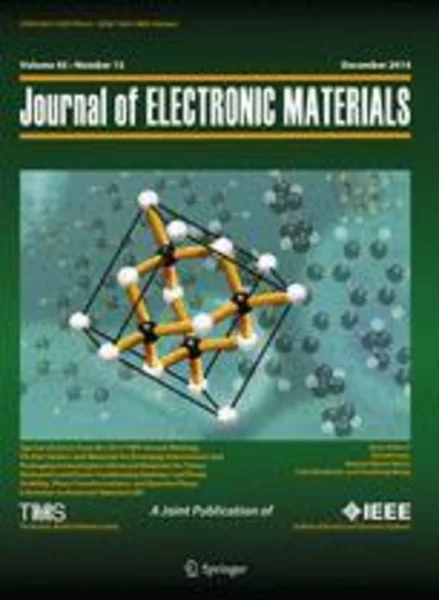-
measurement of thermoelectric properties of phenylacetylene-capped silicon nanoparticles and their potential in fabrication of thermoelectric materials
جزئیات بیشتر مقاله- تاریخ ارائه: 1392/07/24
- تاریخ انتشار در تی پی بین: 1392/07/24
- تعداد بازدید: 825
- تعداد پرسش و پاسخ ها: 0
- شماره تماس دبیرخانه رویداد: -
silicon is a highly attractive material for the fabrication of thermoelectric materials. nanostructured silicon materials, such as silicon nanowires (sinws), show great potential as they show low thermal conductivities due to efficient phonon scattering but similar electrical conductivities to bulk silicon. silicon nanoparticles (sinps) are easier to synthesize and show a greater number of surface defects, which suggests that more efficient phonon scattering can be achieved, but these materials also show low electrical conductivity due to defects within the materials unless pressed at high temperatures (1100°c). conjugated capping layers show the potential to bridge these defects, giving higher conductivity without the need for this process. phenylacetylene-capped sinps are synthesized via the micelle reduction method and pressed into a pellet. measurements of the electrical conductivity, seebeck coefficient, and thermal conductivity were taken. the results show that the material produced from these particles shows a relatively high seebeck coefficient (3228.84 μv k−1) which would have a positive effect on the figure of merit (zt). a respectable electrical conductivity (18.1 s m−1) and a low thermal conductivity (0.1 w m−1 k−1) confirm the potential of using conjugated molecules as a way of cross-linking between nanoparticles in a bulk material fabricated from sinps. these results give a figure of merit of 0.57, which is comparable to better established thermoelectric materials.
مقالات جدیدترین رویدادها
-
استفاده از تحلیل اهمیت-عملکرد در ارائه الگوی مدیریت خلاقیت سازمانی و ارائه راهکار جهت بهبود
-
بررسی تاثیر ارزش وجوه نقد مازاد بر ساختار سرمایه شرکت های پذیرفته شده در بورس اوراق بهادار تهران
-
بررسی تأثیر سطح افشای ریسک بر قرارداد بدهی شرکت های پذیرفته شده در بورس اوراق بهادار تهران
-
بررسی تأثیر رتبه بندی اعتباری مبتنی بر مدل امتیاز بازار نوظهور بر نقد شوندگی سهام با تأکید بر خصوصی سازی شرکت ها
-
تأثیر آمیخته بازاریابی پوشاک ایرانی بر تصویر ذهنی مشتری پوشاک ایرانی (هاکوپیان)
-
بررسی تأثیر پول نقد ناکافی و اضافی و چرخه تبدیل وجه نقد بر عملکرد آینده شرکت های فلزات اساسی
-
استفاده از مدل aquacrop برای مدیریت آب و تعیین عمق و زمان آبیاری گندم زمستانه
-
تأثیر زبری بستر رودخانه در انتشار امواج ناشی از شکست سد خاکی (مطالعه موردی رودخانه آجی چای و سد شهید مدنی )
-
کاربرد روش بدون شبکه المان های طبیعی با درون یاب non-sibson در مدل سازی نشت آب از پی سد با دیواره آب بند
-
le nouveau roman : l'analyse de la nouvelle de houshang golshiri "har do ruye sekeh"
مقالات جدیدترین ژورنال ها
-
مدیریت و بررسی افسردگی دانش آموزان دختر مقطع متوسطه دوم در دروان کرونا در شهرستان دزفول
-
مدیریت و بررسی خرد سیاسی در اندیشه ی فردوسی در ادب ایران
-
واکاوی و مدیریت توصیفی قلمدان(جاکلیدی)ضریح در موزه آستان قدس رضوی
-
بررسی تاثیر خلاقیت، دانش و انگیزه کارکنان بر پیشنهادات نوآورانه کارکنان ( مورد مطالعه: هتل های 3 و 4 ستاره استان کرمان)
-
بررسی تاثیر کیفیت سیستم های اطلاعاتی بر تصمیم گیری موفق در شرکتهای تولیدی استان اصفهان (مورد مطالعه: مدیران شرکتهای تولیدی استان اصفهان)
-
بررسی و تحلیل اصول و منابع فقهی حقوق عمومی در حکومت و اسلام
-
بهینه سازی مسئله پخش بار اقتصادی با درنظرگرفتن محدودیت های عملیاتی با استفاده از الگوریتم ژنتیک
-
تأثیر پایبندی سازمانی بر رفتارهای انحرافی در محیط کار در پرتو تعلق خاطر کاری و سرمایه های روان شناختی
-
effects of fiber volume fraction and aspect ratio on mechanical properties of hybrid steel fiber reinforced concrete
-
non-uniform relationship for soil-foundation reaction




سوال خود را در مورد این مقاله مطرح نمایید :